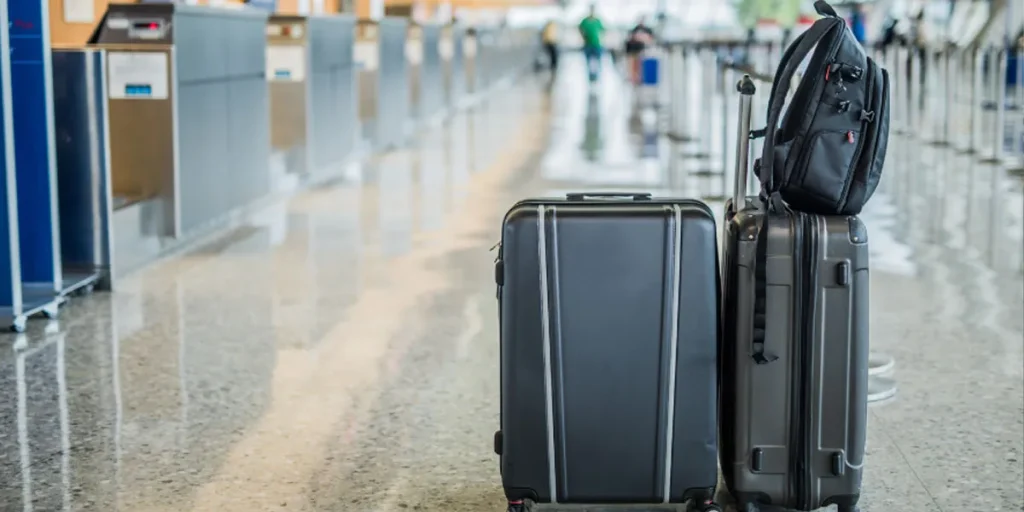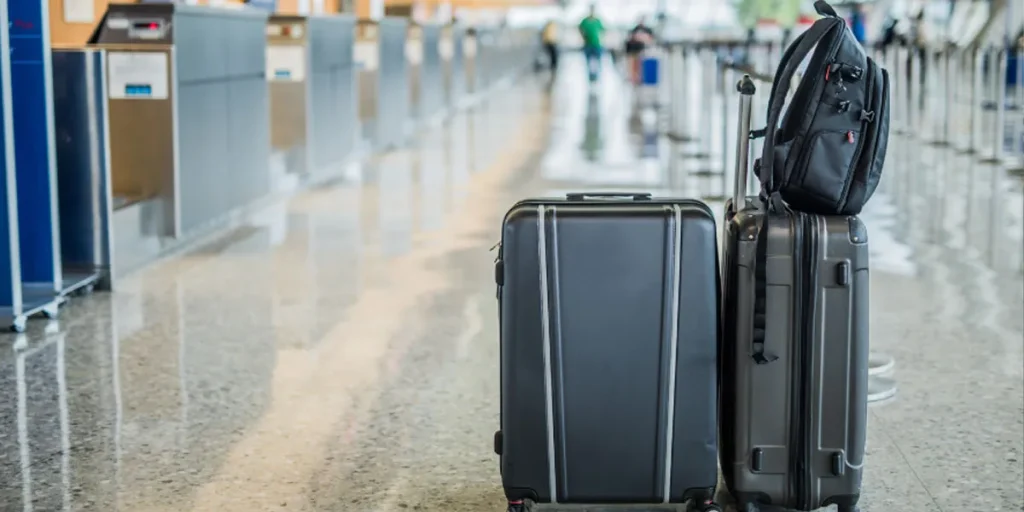Heavy bags typically range from 40 to 150 pounds. Sizes and materials affect their weight.
Heavy bags, essential in combat sports training, provide a versatile tool for improving strength, speed, and technique.
Used by boxers, MMA fighters, and martial artists, these sturdy bags can withstand powerful strikes and kicks.
They come in various shapes, including traditional long bags for punches and kicks, teardrop-shaped bags for uppercut practice, and low-hanging bags for low kicks.
Often filled with materials like sand, water, or compressed fabric, their weight provides resistance, which helps in muscle conditioning.
A proper heavy bag setup ensures a safe and effective workout, supporting overall fighting prowess and fitness.
Selecting the right weight class of a heavy bag is crucial to match the user’s size and skill level, ensuring the enhancement of coordination and power without compromising technique.

Essential Role Of Heavy Bags In Training
Heavy bags stand as fundamental pillars in combat training. These sturdy pieces of equipment build precision, power, and technique for fighters.
Through consistent practice, individuals hone their skills that are essential in the world of martial arts, boxing, and self-defense.
From Amateurs To Professionals
Every journey starts with a solid foundation. For fighters, that foundation lies in honing strikes against heavy bags.
The gradual progression from amateurs to seasoned professionals can largely be attributed to focused heavy bag training which sharpens reflexes and improves technique.
- Develops foundation for combat sports
- Sharpens reflexes for quick responses
- Improves technique across skill levels
Building Strength And Endurance
Strength and endurance are core components in any fighter’s repertoire. Regular sessions with a heavy bag allow athletes to develop muscular power alongside cardiovascular resilience.
- Muscular power developed through repetitive strikes
- Cardiovascular endurance enhanced with high-paced routines
Punch by punch, kick by kick, consistent heavy bag training ensures the body adapts to the rigors of extended physical encounters.
This training format builds a tougher physique capable of withstanding long bouts in the ring or during a match.
Decoding The Weights Of Heavy Bags

Curious about how heavy a heavy bag can be? It’s time to unravel the mystery. Boxing enthusiasts and workout warriors alike know the importance of a good heavy bag.
But the weight of these bags varies greatly, affecting your exercise intensity and objectives.
Standard Weight Classes
Heavy bags come in different weight classes. Just like boxers compete in various classes, heavy bags align with these categories to match training needs.
| Bag Weight | User Weight | Experience Level |
|---|---|---|
| 40-60 lbs | Up to 120 lbs | Beginner |
| 60-70 lbs | 120-150 lbs | Intermediate |
| 70-100 lbs | 150-180 lbs | Advanced |
| Over 100 lbs | Over 180 lbs | Professional |
Material And Filling Factors
The weight of a heavy bag is also influenced by some other factors. Material and filling contribute significantly.
- Leather bags are generally heavier.
- Canvas bags may be lighter and more affordable.
- Filling impacts weight – sand adds more heft than fabric or foam.
Moreover, different fillings affect the bag’s firmness and resistance. Choosing the right one depends on your goals.
A denser heavy bag gives a different feedback than a softer one, impacting the feel of your punches and your workout’s effectiveness.
Choosing The Right Heavy Bag Weight
Finding the perfect heavy bag is like matching a key to a lock. The right weight means better training and improved skills.
Whether you are stepping into the ring for the first time or you’re already throwing punches like a pro, the massive difference a heavy bag makes is undeniable.
Let’s break down how to select the one for your needs.
Assessing Your Skill Level
Your current skill level plays a pivotal role in choosing your bag. For a beginner, a lighter bag swings more, teaching you about timing and rhythm.
Whereas, more experienced fighters may seek a heavier bag for resistance and strength training.
Weight Recommendations By Use Case
Selecting a heavy bag weight isn’t a one-size-fits-all scenario.
- Beginners: Lighter bags between 40-60lbs
- Intermediate: Medium bags around 70-90lbs
- Pros: Heavy bags above 100lbs for maximum resistance
Additionally, consider these use cases:
| Use Case | Suggested Weight |
|---|---|
| Cardio Training | 40-60lbs |
| Boxing Technique | 60-70lbs |
| Kickboxing/Muay Thai | 100lbs+ |
| Strength Building | 100lbs+ |
Impact Of Heavy Bag Weight On Performance

Training with a heavy bag is crucial for fighters. It builds endurance, strength, and technique. The weight of the heavy bag can change how you perform.
Speed And Agility Considerations
Speed and agility are vital in combat sports. A lighter bag may sway more, promoting quicker movements.
This can improve your reaction time. It trains you to adjust your position swiftly.
- A swaying bag mimics an opponent’s movement.
- Fast punches and kicks need a lighter bag.
- Moving around a swinging bag boosts footwork.
Consider your goals. Do you want to hit faster? Maybe move with grace? Pick a bag that challenges your pace. Up your game as you grow.
Force And Power Development
Hitting a heavier bag feels different. It requires more force and effort. It helps you build raw power. The sturdiness of a heavy bag lets you practice full-power strikes.
| Bag Weight | Force Required | Impact on Power |
|---|---|---|
| Lighter Bag (<70 lbs) | Less Force | Speed Over Power |
| Heavier Bag (>100 lbs) | More Force | Strength Development |
Train with various weights to fine-tune your skills. Start with lighter bags. Work up to heavier ones.
Challenge your muscles differently each time. This promotes balanced growth in both speed and power.
Adjusting And Customizing Bag Weight
When you step into a gym, one of the first things you’ll likely see is the heavy bag. Known for its versatility, it’s a staple for strength and conditioning.
Yet, what if the default weight doesn’t meet your training needs? The great news is, you can adjust a heavy bag’s weight. Let’s explore how.
Adding Or Removing Filling
Customize the weight of your heavy bag to suit your level and type of training. Begin by unzipping the top or bottom, depending on the model.
Inside, you’ll find materials like sand, fabric, or grains. Here are simple methods to adjust the bag weight:
- Remove filling to lighten the bag for speed training or if you’re new to boxing.
- Add more filling for strength training or to increase resistance.
Keep balance in mind. Replace the filling evenly to maintain the bag’s shape and functionality.
Utilizing Weighted Attachments
If your bag doesn’t have a removable filling, consider weighted attachments. These are additional weights that you can strap onto the bag. They come in various forms:
| Type | Placement | Weight Range |
|---|---|---|
| Weighted Jackets | Wrap around bag | 5-40 pounds |
| Chain Weights | Attach to top or bottom | 1-15 pounds |
| Ankle/Wrist Weights | Wrap around the bag | 1-5 pounds each |
Choose attachments based on your desired weight increase. Remember, balance is key here. Secure weights properly to avoid shifting that can affect your workout.
Maintaining And Storing Heavy Bags
Proper care for heavy bags ensures they last longer and remain safe for use. From the wear and tear of daily punches and kicks, heavy bags require regular maintenance.
This not only extends their lifespan but also keeps your training effective and injury-free. Let’s explore the best practices for the upkeep and storage of heavy bags.
Regular Inspection Tips
- Check for damage: Look for cuts, tears, or changes in shape.
- Assess the chains and straps: Ensure they are secure and free of rust.
- Inspect the filling: Confirm it remains evenly distributed.
- Monitor hanging hardware: Tighten bolts and replace if necessary.
Proper Storage Techniques
Store your heavy bag correctly to protect its integrity. Here are some techniques:
- Avoid damp areas: Keep the bag in a dry space to prevent mold.
- Use a cover: A heavy bag cover protects against dust and sunlight.
- Support the shape: Lay the bag horizontal if necessary to retain form.
- Maintain room temperature: Extreme temperatures can damage the bag.
FAQs About the Weight of Heavy Bags
What Is The Typical Weight Of Heavy Bags?
Heavy bags for boxing or martial arts typically weigh between 40 to 150 pounds.
Their weight aligns with the users’ size and skill level, allowing for effective strength and endurance training without the risk of injury.
Can Heavy Bags Weight Be Adjusted?
Some heavy bags come with adjustable weight features, allowing the user to fill or empty the bag to a desired weight.
However, most traditional heavy bags have a fixed weight and are not designed to be adjusted.
What Factors Influence Heavy Bag Weight?
The weight of a heavy bag is influenced by its size, filling material (usually sand, water, or dense fibers), and the intended user’s weight and training level.
Manufacturers often suggest a bag that’s approximately half the individual’s body weight.
How To Choose The Right Heavy Bag Weight?
Choosing the correct heavy bag weight involves considering your body weight and fitness goals.
A general rule is to select a bag that’s around half your body weight, ensuring you can train effectively while minimizing the risk of injury.
Conclusion
Wrapping up, heavy bags vary widely in weight depending on their intended use, ranging from around 40 to 150 pounds.
As you select the perfect bag, keep your training goals and physical capabilities in mind. Remember, the right bag can significantly enhance your workout routine.
Choose wisely and punch on!
